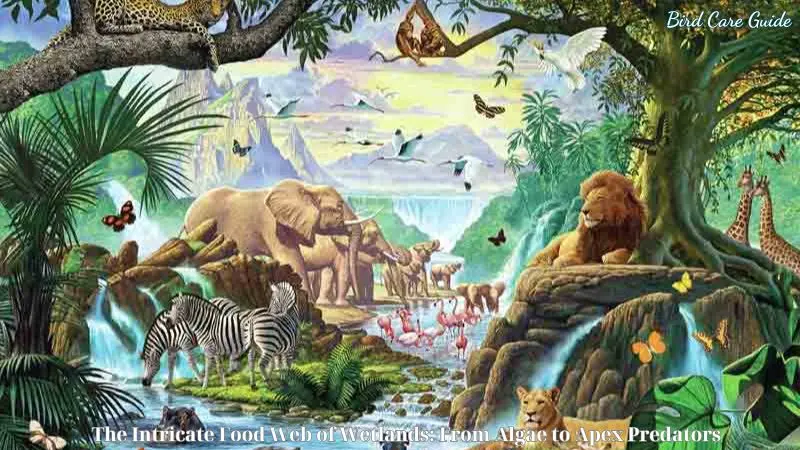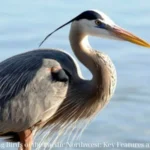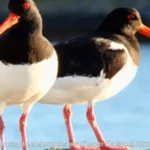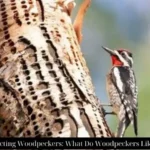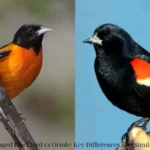Wetlands are some of the most dynamic and productive ecosystems on Earth. They provide a plethora of ecological services, including water purification, flood control, and carbon sequestration. However, one of the most fascinating aspects of wetlands is their intricate food web. The food web of wetlands encompasses a diverse array of organisms, from microscopic algae to apex predators. Understanding this complex network of interactions is crucial for conserving these vital ecosystems.
This Bird Care Guide article delves into the different components of wetland food webs, exploring the relationships and interactions that underpin these vibrant ecosystems.
Algae: The Primary Producers
The Foundation of the Food Web
At the base of the wetland food web are the primary producers, predominantly algae. These microscopic organisms are critical in converting sunlight into energy through photosynthesis. Algae form the foundation of the food web, producing organic matter that supports a multitude of life forms.
Types of Algae in Wetlands
- Phytoplankton: These free-floating microscopic plants are found in the water column and are essential in the primary production of wetlands.
- Periphyton: These algae grow on surfaces such as rocks, plants, and other submerged structures, providing a rich food source for many invertebrates.
- Benthic Algae: Found on the bottom of wetland areas, these algae contribute significantly to the ecosystem’s productivity.
Importance of Algae
- Oxygen Production: Algae produce oxygen through photosynthesis, which is vital for the survival of aerobic organisms in the wetland.
- Nutrient Cycling: Algae play a crucial role in nutrient cycling, converting inorganic nutrients into organic forms that are accessible to other organisms.
Primary Consumers: The Herbivores
Zooplankton and Invertebrates
Primary consumers in wetlands primarily include zooplankton and a variety of invertebrates that feed on algae and other plant material.
- Zooplankton: These tiny, often microscopic animals, such as copepods and rotifers, feed on phytoplankton and are an essential food source for larger organisms.
- Aquatic Insects: Insects like mayflies, dragonflies, and caddisflies larvae graze on algae and detritus, playing a crucial role in the food web.
Larger Herbivores
In addition to small invertebrates, larger herbivores also play a significant role in wetland ecosystems.
- Snails and Crustaceans: Freshwater snails and crustaceans, such as crayfish, consume periphyton and macrophytes, contributing to the nutrient cycle.
- Amphibians: Tadpoles and some adult amphibians feed on algae and detritus, acting as a bridge between aquatic and terrestrial food webs.
- Waterfowl: Ducks, geese, and other waterfowl consume a variety of aquatic plants and algae, influencing the distribution and abundance of primary producers.
Secondary Consumers: The Carnivores
Invertebrate Predators
Secondary consumers in wetlands include invertebrate predators that feed on primary consumers.
- Insect Predators: Dragonfly nymphs, water beetles, and predaceous diving beetles feed on other insects, zooplankton, and small aquatic animals.
- Spiders and Mites: These arachnids prey on smaller insects and contribute to the control of insect populations.
Fish and Amphibians
Fish and amphibians are prominent secondary consumers in wetland ecosystems.
- Small Fish: Species such as minnows, sunfish, and sticklebacks feed on zooplankton, insects, and small invertebrates.
- Amphibians: Frogs, toads, and salamanders consume insects, small fish, and other amphibians, playing a dual role as both predators and prey in the food web.
Tertiary Consumers: The Top Predators
Larger Fish and Birds
Tertiary consumers include larger fish and birds that prey on secondary consumers, maintaining the balance of the ecosystem.
- Predatory Fish: Species such as bass, pike, and catfish are apex predators in many wetland systems, feeding on smaller fish, amphibians, and invertebrates.
- Birds: Herons, egrets, and kingfishers are among the bird species that hunt fish, amphibians, and insects, serving as critical links between aquatic and terrestrial food webs.
Mammalian Predators
Mammals also play a significant role as top predators in wetland ecosystems.
- Raccoons and Otters: These mammals feed on fish, amphibians, and invertebrates, contributing to the dynamic balance of wetland food webs.
- Bats: Insects and small vertebrates are primary prey for bats, which are essential in controlling insect populations.
Decomposers: The Recyclers
Bacteria and Fungi
Decomposers are crucial for nutrient cycling in wetland ecosystems, breaking down organic matter and returning nutrients to the environment.
- Bacteria: These microorganisms decompose dead plant and animal matter, facilitating nutrient recycling and maintaining soil health.
- Fungi: Fungi, including molds and mushrooms, break down complex organic materials, contributing to the decomposition process.
Detritivores
Detritivores feed on dead organic material, further aiding decomposition and nutrient cycling.
- Worms and Insects: Earthworms, beetles, and other insects consume detritus, breaking it down into simpler forms that decomposers can process.
- Crustaceans: Crayfish and other crustaceans play a similar role, consuming detritus and contributing to the nutrient cycle.
Human Impact on Food web of wetlands
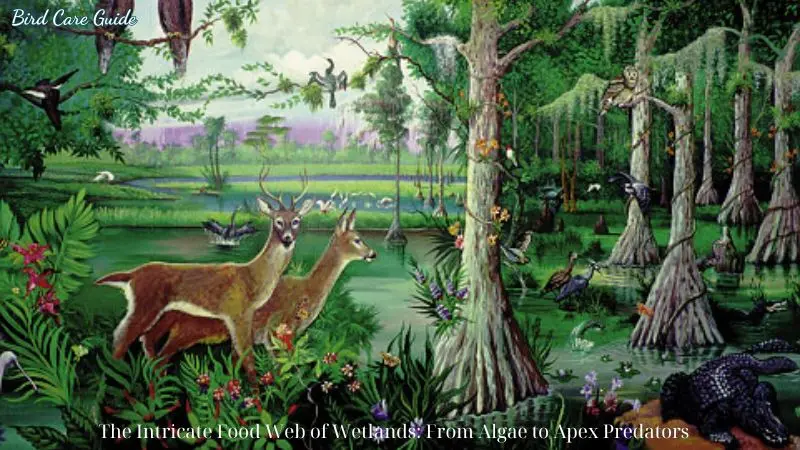
Habitat Destruction
Human activities such as agriculture, urban development, and pollution have significantly impacted wetland ecosystems, disrupting food webs and threatening biodiversity.
- Drainage and Development: Wetlands are often drained for agriculture or urban development, leading to habitat loss and fragmentation.
- Pollution: Chemical pollutants, including pesticides and heavy metals, contaminate wetland habitats, affecting the health of organisms at all trophic levels.
Climate Change
Climate change poses a significant threat to wetland ecosystems, altering temperature and precipitation patterns and impacting the distribution and abundance of species.
- Temperature Changes: Rising temperatures can affect the timing of life cycle events, such as flowering and breeding, disrupting food web dynamics.
- Sea Level Rise: In coastal wetlands, sea level rise can lead to saltwater intrusion, altering the composition of plant and animal communities.
Conservation Efforts
Efforts to conserve and restore wetlands are crucial for maintaining the integrity of these ecosystems and the food webs they support.
- Restoration Projects: Rewetting drained wetlands, removing invasive species, and reintroducing native plants and animals are essential steps in wetland restoration.
- Protected Areas: Establishing protected areas helps safeguard wetland habitats from development and pollution, ensuring the survival of diverse plant and animal species.
Conclusion
The food web of wetlands is a complex and dynamic network of interactions that supports a diverse array of species. From algae and phytoplankton to apex predators, each organism plays a vital role in maintaining the health and stability of these ecosystems. Understanding the intricacies of the wetland food web is crucial for effective conservation and management efforts. By protecting and restoring wetlands, controlling pollution and invasive species, and mitigating the impacts of climate change, we can ensure the continued functioning and resilience of these vital ecosystems for future generations.

